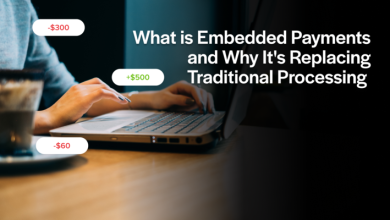
The concept of vibe coding is taking the internet by storm. Web development in particular has always grown in periodic leaps and bounds, but vibe coding has set tongues wagging past the point of no return. We are on the cusp of a major shift in how we think about building websites.
But here’s the deal about vibe “coding.” There is no coding. You describe what you want, and AI generates the code. It’s still young, and definitions are a bit fuzzy, but it’s already reshaping expectations. Non-technical users are building real websites, tools, apps, and even founding startups this way. Developers seem divided, with some enthusing about vibe coding’s potential to more skeptical peers who’d probably like AI to stay in its lane.
So, it’s not fully defined or accepted, but vibe coding is fast becoming a part of everyday use. And if there’s a natural home for this new concept in development, it’s in a controlled environment with battle-tested components.
Powered by the tried-and-true WordPress backend, groundbreaking innovations like 10Web’s AI-powered, vibe coding frontend builder are forging the path to find the best of both worlds.
What is Vibe Coding?
Vibe coding is intent-first development. Instead of writing loops or CSS rules, you describe the outcome you want. If you were vibe coding a website, you might ask the AI to:
- Make this header bolder
- Add a product grid
- Create an animation for this element
Then, a vibe coding tool like Lovable or Bolt.new writes the code.
Andrej Karpathy, who first coined the phrase “vibe coding,” described it not as coding, but a collaborative flow where he would “see stuff, say stuff, run stuff… and it mostly works.” In a world of vibe coding, where you don’t touch the code (unless you want to read machine-written code), it’s less about syntax and all about the intended outcome.
On the spectrum of AI in development, vibe coding represents the intent-first stage. Unlike autocomplete or coding copilots, which still require coding knowledge, vibe coding is accessible to anyone who can describe what they want. Unlike autonomous systems, it’s collaborative. When vibe coding, you prompt, review, and refine.
Why Frontend Development is Well-Suited for Vibe Coding
Frontend work has always been visual and iterative, making it a compelling choice as a proving ground for vibe coding.
- For non-technical users, vibe coding lowers the barrier to creating usable websites. Instead of wrestling with templates or feeling the pinch with drag-and-drop builders, they simply describe what they want and watch it take shape.
- For developers and agencies, it shifts the focus from boilerplate to orchestration. Experienced coders can delegate tasks to AI, validate results, and dedicate more resources to design, strategy, and architecture. For agencies and businesses, vibe coding also opens the door to enhanced end-user capabilities for clients, expanded growth channels, improved customer experience, and retention.
Drag-and-drop page editors and no-code builders brought site building to the masses, but often came with constraints. Vibe coding removes those limits and gives website development wings.
It allows non-technical users to describe what they want, while still giving developers full control over the code. Vibe coding doesn’t start with a template. It starts with intent and the desired outcome.
Bridging the Gap Between Vibe Coding and WordPress
WordPress is well known for lowering the barrier to publishing online. Themes, plugins, and page builders opened doors for millions of creators. Vibe coding seems primed as the natural next step in that progression, but it’s not lining up to be another page builder for “just another WordPress site”.
Standalone, vanilla vibe coding can invite significant problems. Without sufficient oversight, raw vibe coding on standalone or proprietary platforms can produce brittle code, hidden vulnerabilities, or bloated outputs. Without a solid foundation, vibe-coded projects can look impressive in a demo, but quickly fall apart under real-world conditions.
Pairing an AI-native frontend with WordPress is the logical next step. By vibe coding and building on the WordPress backend, non-coders and developers build on a battle-tested CMS while maintaining control and ownership of the frontend design and code.
Pairing the WordPress backend and vibe coding:
- Frees non-technical users from drag-and-drop builders by removing template constraints altogether.
- Retains WordPress’s capabilities for dynamic content, security, functionality, and flexibility.
- Gives developers full control, code ownership, and production-ready workflows.
Vibing With Full-Stack, AI-Driven WordPress Development
Tools like 10Web’s Vibe for WordPress show how this can work in practice. With an AI-native vibe coding frontend builder for WordPress, users get a complete and reliable backend, supported in an optimized environment.
Non-technical users and developers collaborate with AI to build any kind of website without leaving the e-commerce-ready WordPress ecosystem. All while maintaining full code ownership so that you can move, modify, or extend anywhere.
Vibe coders describe the desired result, then the AI generates a version, which is refined through conversation in the point-and-click vibe coding editor. A landing page, product grid, or multi-page site can come together in minutes.
As Arto Minasyon, Co-founder and CEO of 10Web, put it, “this is the future of AI-powered web creation, running natively on WordPress.”
Development Using Natural Language
With the rise of vibe coding in WordPress development, users are free to explore and experiment with natural language prompts, which AI translates into fully functional WordPress websites and apps.
- Individuals and solo creators have the freedom to experiment, prototype, and build anything they can dream up, while having a conversational AI to do the heavy lifting.
- Small business owners can launch professional sites and ecommerce stores without a dedicated development team.
- WordPress developers get familiar functionality and control without the need for a time-consuming backend setup.
- Agencies can deliver sites more quickly and expand their services.
- Hosting providers, SaaS platforms, Telcos, MSPs, and more can bundle white label, AI-native website creation into their products and services, integrated via plugin or API.
By integrating fully into the WordPress backend, Vibe for WordPress pushes past the biggest limitation with vibe coding websites today. This full-stack AI-native development environment bridges the gap between pure vibe coding and a production-ready solution built on the world’s most popular CMS.
Users prompt to generate a new website, then refine using natural language in the visual editor or edit code directly. Everything runs on an all-in-one performance hosting stack, and projects get access to the entire WordPress ecosystem, with thousands of plugins and built-in ecommerce support.
Say Stuff, Run Stuff, and Let WordPress Power it
Vibe coding marks a turning point for web development. It lowers barriers, shifts roles, and speeds up the path from idea to execution. Frontend development seems a natural starting point, and WordPress provides the foundation to make it more than a passing trend.
The best way to understand vibe coding is to see it in action. Exploring a user-friendly platform like 10Web’s Vibe for WordPress is a practical way to see how vibe coding in web development uses intent-first, natural language to bring websites to life. Look for Vibe for WordPress, coming to the 10Web platform on October 15, 2025.



